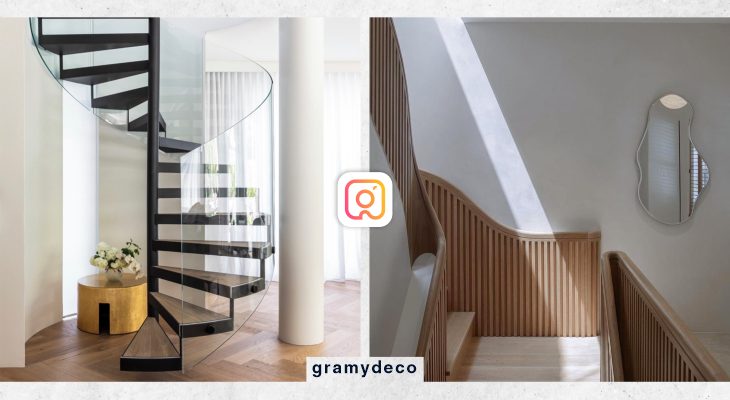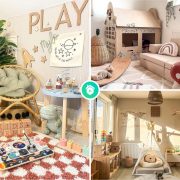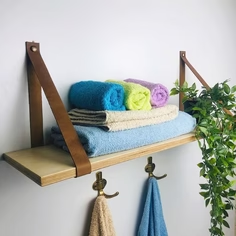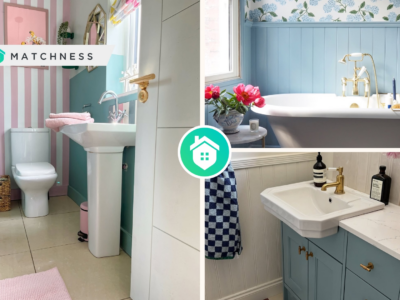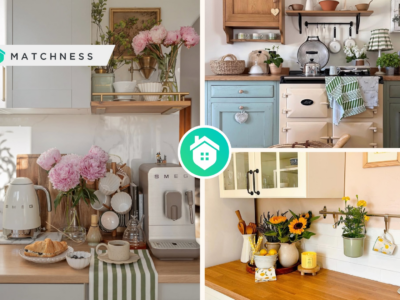We all know that a killer workout routine isn’t about the grandeur of a gym or the Instagram-worthy vibe of a studio; it’s about setting personal goals and sticking to them, no matter where you are or what your budget looks like. Despite what those fancy gyms might want you to believe, you can achieve greatness with a few tweaks here and there.
When we think of home gyms, many of us conjure up images of dreary garages or cluttered storage spaces with a lonely treadmill thrown in for good measure. But hey, it doesn’t have to be that way! If you’ve been pondering the idea of carving out a workout nook in your humble abode, we’re here to inject some inspiration into your day. Check out these 6 swoon-worthy examples of mini home gyms that are big on style and motivation.
1. Designate Space
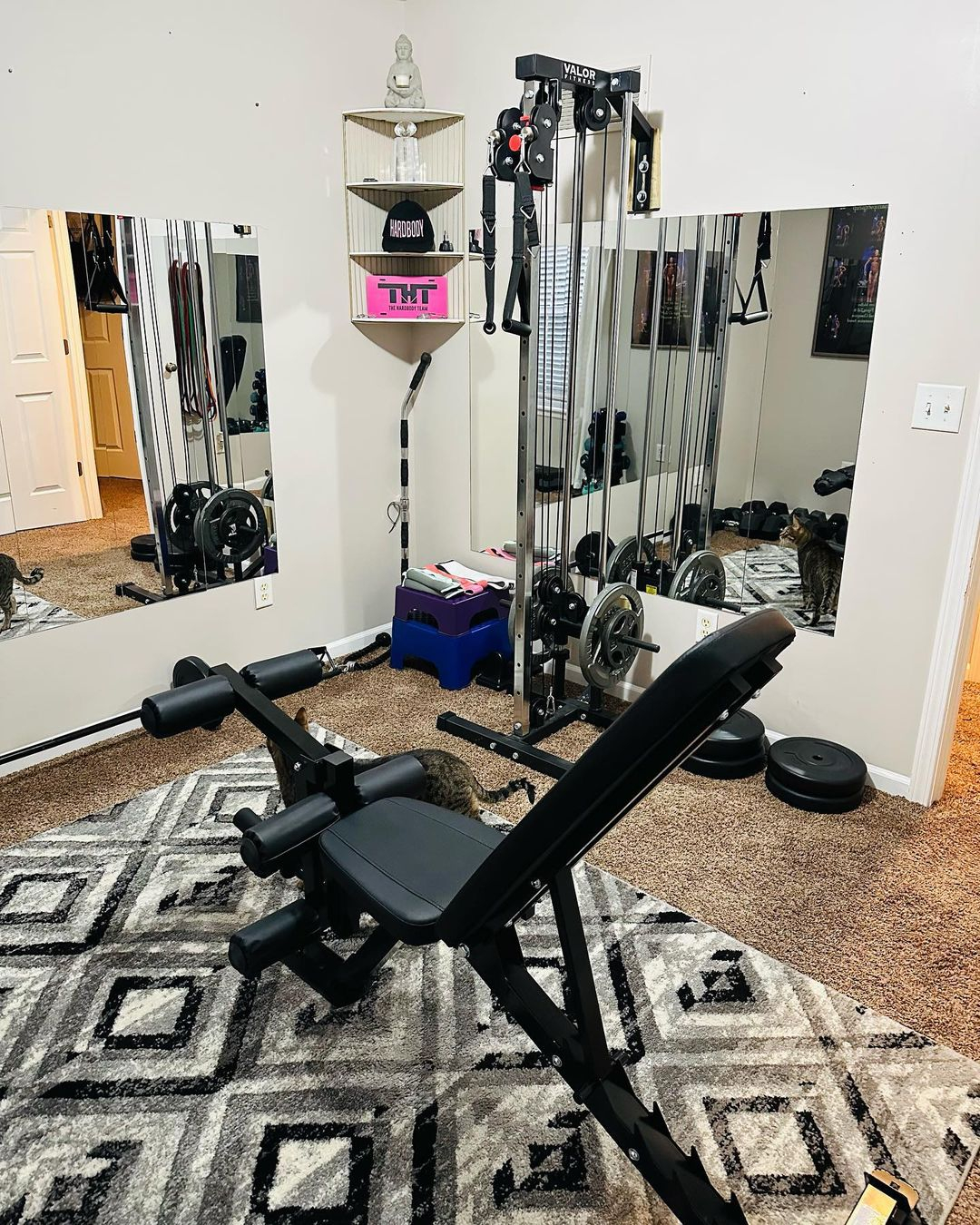
By carefully planning and designing your mini gym room, you can create a welcoming and functional space that encourages regular exercise and supports your overall health and wellness goals. Home gym from @ twingirlmcbee
Discover a spot in your home where you can create your own mini gym. It’s best to pick a place away from the hustle and bustle of your main living spaces to keep distractions at bay while you work out. Think about converting that spare room gathering dust, finding a snug corner in your living room, or revamping part of your garage that’s just collecting clutter. The goal is to find a spot that’s easy to reach, lets you concentrate on your workout, and doesn’t get in the way of your daily routine.
2. Basic Equipment
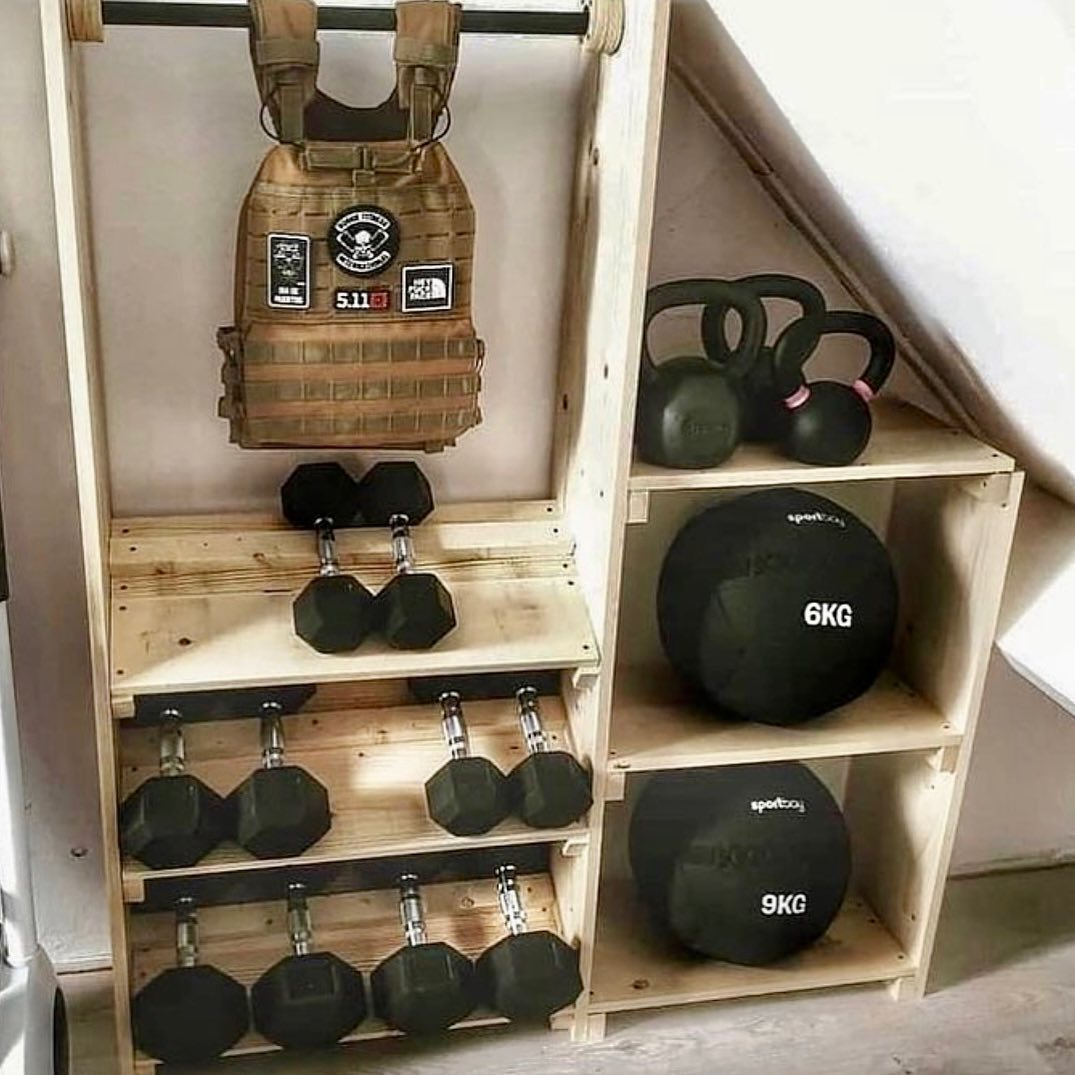
Maximize space efficiency by arranging basic equipment like dumbbells, resistance bands, and a yoga mat in designated storage areas within your mini home gym, ensuring easy access while keeping the area organized and clutter-free. Gear from @ home_gymideas
Consider acquiring a robust rack or shelving system to neatly arrange and store your dumbbells and kettlebells, thereby reducing tripping hazards and promoting an organized space. Arrange the weights in a logical sequence, perhaps by weight or size, to simplify selection during workouts. To streamline your setup further, contemplate integrating adjustable dumbbells or kettlebells, which offer versatility in weight selection without cluttering your space with numerous individual pieces of equipment. Ensure sufficient clearance around the storage area to enable safe retrieval and usage of the weights, preventing cramped conditions that might impede proper form and movement.
3. Cardio Equipment
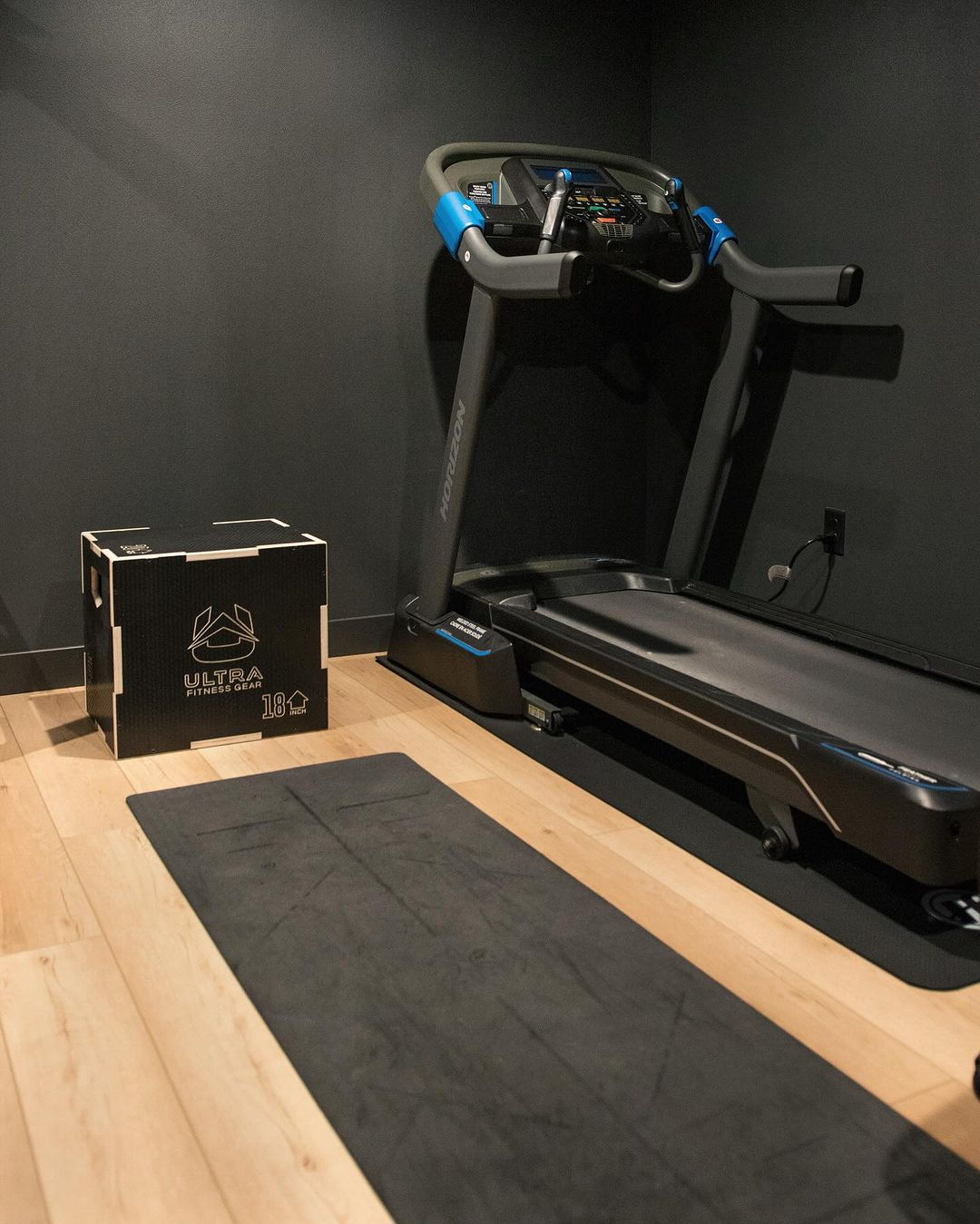
Positioning cardio equipment against a wall or in a corner to optimize floor space, while ensuring they remain easily accessible for your workouts, creating a functional and inviting exercise area within your home. Treadmill from @ frengpartyof6
Opt for space-saving cardio gear like a foldable treadmill, stationary bike, or compact elliptical machine, all designed to seamlessly integrate into your available space. Strategically position these cardio machines along a wall or in a corner to minimize their footprint while ensuring comfort during use. Leave ample clearance around the equipment for safe and unhindered movement during workouts.
Enhance the versatility of your mini gym by considering multi-functional cardio equipment, such as a rowing machine that provides both a cardiovascular and upper body workout. To maintain an open and clutter-free environment, designate storage areas for smaller items like resistance bands and jump ropes, thus preserving a tidy space that encourages effective workouts.
4. Bodyweight Exercises
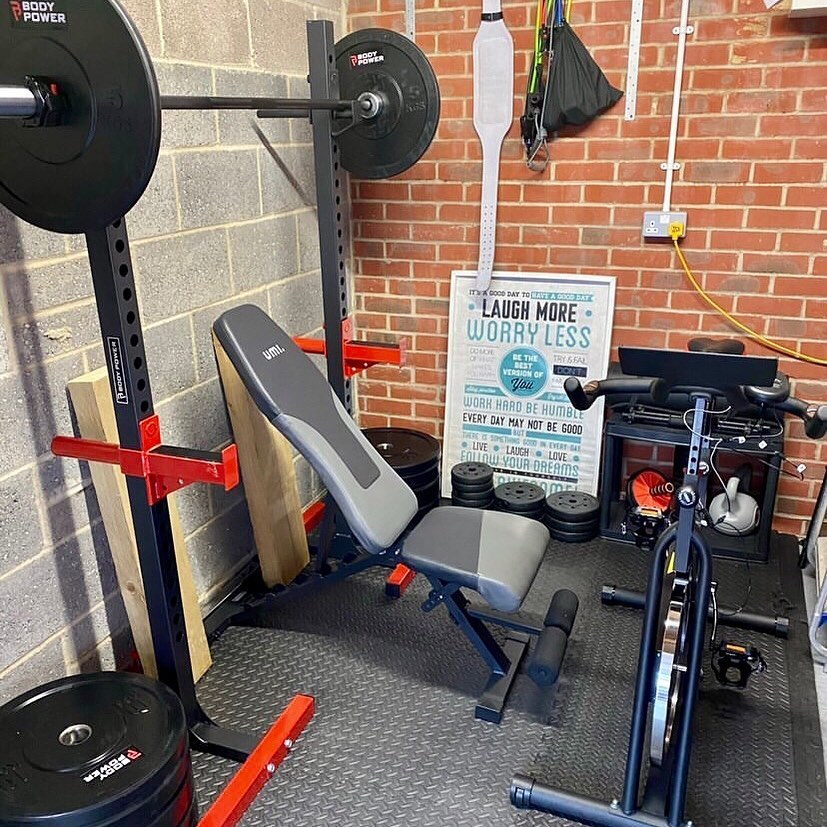
Placing them in designated areas to facilitate a wide range of bodyweight exercises, ensuring versatility and effectiveness in your fitness routine while conserving space. Bodyweight gear from @ home_gymideas
Begin by delineating specific zones within your mini home gym for various types of exercises. Utilize wall-mounted racks or hooks to suspend resistance bands, yoga mats, and foam rollers, ensuring easy access while preserving space. Install a pull-up bar or suspension trainer in an area with sufficient clearance for full-range motion exercises. Integrate foldable or stackable equipment like adjustable dumbbells, kettlebells, and medicine balls, facilitating neat storage when not in use.
Implement vertical storage solutions such as shelves or racks to organize hand weights and jump ropes, keeping them orderly and accessible. Dedicate ample floor space for activities like yoga, Pilates, and bodyweight exercises by positioning larger equipment against walls or in corners. Lastly, maintain a clutter-free environment by periodically reassessing and optimizing the layout to accommodate your evolving fitness regimen and spatial limitations.
5. Functional Training Tools

Organize your mini home gym efficiently by arranging training tools such as dumbbells, kettlebells, and medicine balls on sturdy shelves or racks, ensuring easy accessibility and creating a visually appealing layout that inspires motivation and consistency in your workouts. Training tools from @ genevaglassworks
When organizing functional training tools in a compact home gym, prioritize efficiency and accessibility. Begin by assigning specific areas for each tool based on their frequency of use and size. Optimize space by placing larger items like stability balls and Bosu balls against walls or in corners, preserving floor space for unrestricted movement during workouts. Utilize storage solutions such as shelves or bins to neatly store smaller items like resistance bands and foam rollers, ensuring they’re easily accessible. Maintain a clutter-free environment to facilitate smooth transitions between exercises.
6. Multifunctional Equipment
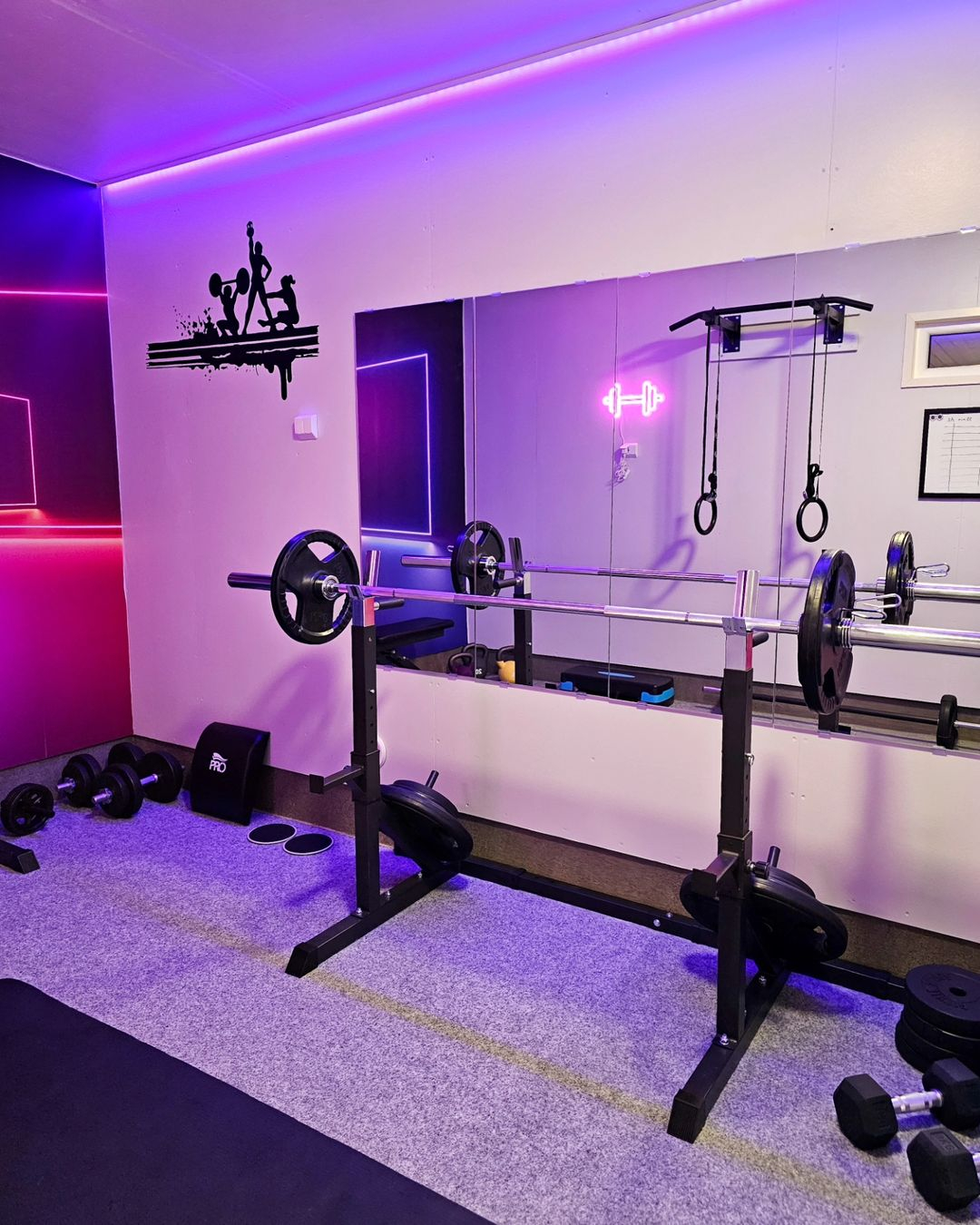
Maximize your home gym space with versatile equipment! Home gym design ideas from @ tiiamaariafin
Maximize the efficiency of your home gym layout by focusing on versatile equipment. Start with an adjustable weight bench, serving as a compact focal point for exercises such as bench presses, step-ups, and tricep dips. Place it centrally for easy access from all sides. Enhance your setup with a power tower positioned nearby, providing pull-up, dip, and vertical knee raise stations in one unit. With these space-saving pieces, you’ll optimize your workout area for a diverse range of exercises while conserving valuable space, enabling efficient progress towards your fitness objectives.


